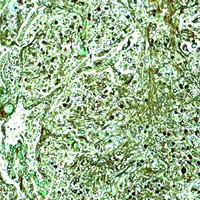Staining

Cellular elements often have different refractive indices, which can be utilised to permit partial identification by means of various forms of microscopy. For detailed study however, and to prepare permanent preparation, staining procedures are invariably employed.
Our biological stains are prepared where possible from Certstain® dyes, which have been manufactured to a rigid specification for this purpose and have been subjected to stick quality assurance procedures reflecting the main methods of use. These dyes are classified into two groups, synthetic, which are by far the larger group and natural. However, some of the more important biological stains such as haematoxylin and carmine belong to the natural group. Haematoxylin and eosin are the most widely used histological stain. Its popularity is based in its ability to demonstrate clearly an enormous number of different tissue structures, its widespread applicability to tissue from different sites and prepared in different ways and its comparative simplicity.
Product selection

Staining Bridge
Ideal for on bench staining of a few slides at a time...

Staining Glassware
Many departments use automated staining instruments, but there is always a need to stain specimens either singularly or in batches...

Staining & Dyes
The VWR portfolio includes extensive ranges of stains and dyes from both BDH Prolabo and Merck...